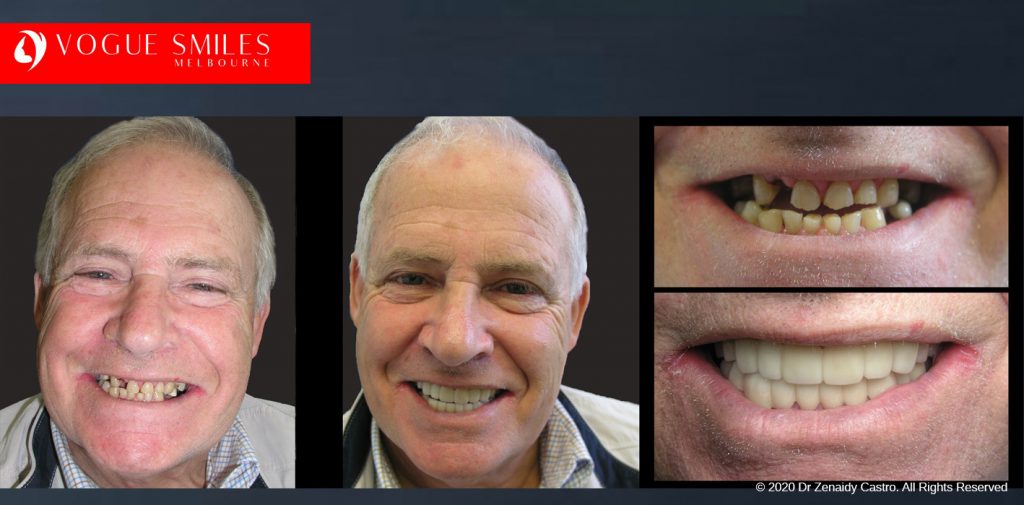DENTAL BONDING -COMPOSITE RESIN VENEERS
Looking for Affordable alternatives to Porcelain Veneer to repair damaged, discoloured, decayed or chipped teeth or want to improve the look of your Smile?
Dental bonding is one of the most versatile dental treatments that uses composite resin material to correct many dental issues. Fast and painless, tooth bonding is the effective, non-invasive – and affordable – way to repair a damaged tooth or for a cosmetic smile enhancement.
Dental bonding is a cosmetic procedure in which a tooth- coloured resin is bonded to the surface of tooth, thus approving its overall appearance. Bonding can be used to repair decayed, chipped or discoloured teeth, and restoring a person’s smile to its natural beauty. Dental bonding is one form of cosmetic dentistry used to help individuals feel confident and secure about the appearance of their smile. Read more below.
Is your Smiles holding you so far back in life?
Composite bonding is an increasingly popular cosmetic dental treatment that is used to improve the shape, colour and overall appearance of teeth. We use white filling materials to either change the shape and contour of teeth or in some cases the whole smile.
There have been huge advances in the materials used in bonding dentistry in recent years, meaning composite bonding can be used for disguising minor imperfections in the front teeth, closing small gaps and hiding minor tooth rotations, with no damage to your teeth.
Most bonding can be done in one visit, and as we usually remove little if any tooth structure we rarely need to use anaesthetic. The materials we use for this allow us to blend colours specific to each patient so we can produce a result that looks not only amazing but natural.
Read more details about Composite below
What is tooth bonding (dental bonding)?
Generally speaking the term “tooth bonding” refers to a range of dental procedures each of which is similar in the sense that it employs the use of a type of dental restorative dentists call “dental composite.” Tooth bonding offers several benefits for patients. It is quick, affordable and great alternative to more extensive cosmetic dentistry treatment with porcelain veneers, bridges, and crowns. Additionally, the composite resin used in a cosmetic bonding procedure is very flexible, expanding and contracting with the natural tooth to prevent cracks and tooth loss. Dental bonding is an excellent option for individuals looking to repair imperfections in their smile.
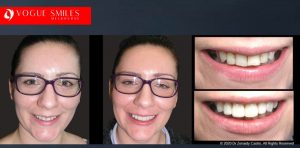
For What Conditions Is Dental Bonding Considered?
Dental bonding is an option that can be considered:
- To repair decayed teeth (composite resins are used to fill cavities)
- To repair chipped or cracked teeth
- To improve the appearance of discoloured teeth
- To close spaces between teeth
- To make teeth look longer
- To change the shape of teeth
- As a cosmetic alternative to amalgam fillings
- To protect a portion of the tooth’s root that has been exposed when gums recede
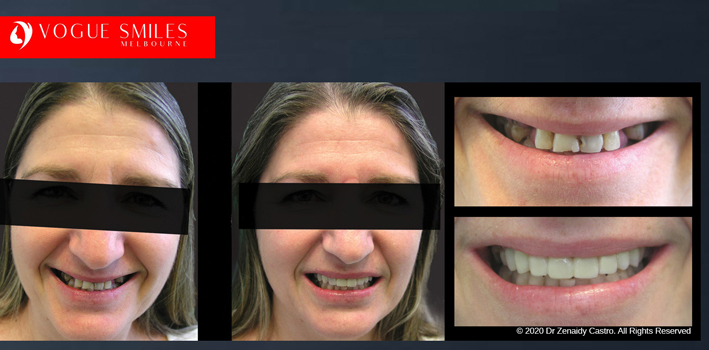
What to expect from Dental Bonding
- The actual bonding procedure is relatively quick. As a fine artist and passionate in Cosmetic dentistry procedures, Dr. Castro takes the time to carefully select a shade of composite resin that perfectly matches your natural tooth colour. This ensures that the cosmetic bonding work is seamless and undetectable to the naked eye. She then roughens the surface of the tooth with a special tool, coats the tooth in a conditioning liquid, and applies the Composite resin,putty-like resin material, allowing her to perfectly fill chips or cracks with high precision. Finally, ultraviolet or laser light is applied to harden the composite resin and complete the bonding. You will sit up from the dental chair with a whole new smile.
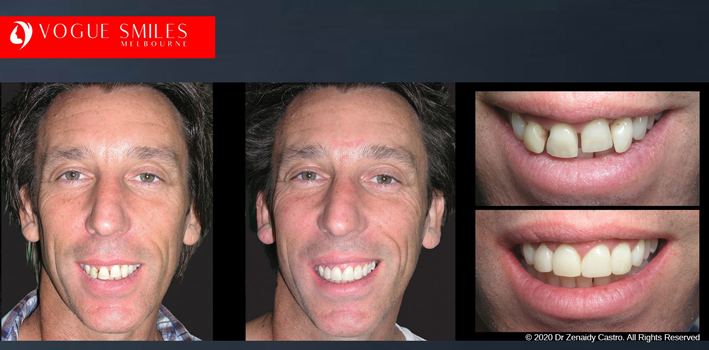
Cosmetic applications for dental bonding materials.
- Cosmetic tooth bonding – Dental bonding can be used to create cosmetic enhancements for teeth.
1) Dental Veneers Veneering of dental bonding over the front side of teeth that have become stained or discoloured as a way of enhancing their cosmetic appearance.
2) Closing a dental gap (diastema). Tooth bonding can be used to fill in gaps that lie between a person’s teeth . When this technique is employed, dental composite is bonded onto the sides of the two teeth that lie on either side of the gap, so to widen each tooth slightly. The net effect is that the space between the two teeth is narrowed, or even filled in completely.
3) Correcting minor cosmetic imperfections. Minor to moderate cosmetic imperfections of chipped, disfigured, or misaligned teeth can be masked or corrected by placing dental bonding.
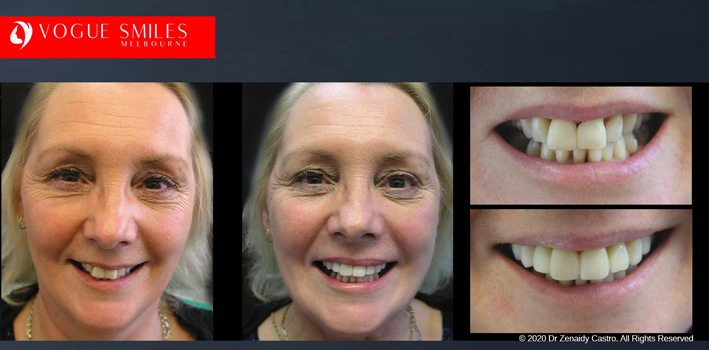
How is dental bonding performed?
- The dentist will prepare your tooth for treatment by roughening and shaping or contouring the surface. Then its followed by a process of applying a dilute acid, called Etch and, to the enamel of a tooth to produce a frosted surface which looks microscopically like a series of mountains and valleys. This microscopic roughness is then filled with a liquid plastic called Bonding agent, which acts as a strong adhesive or glue, which, when hardened, mechanically adheres onto the surface of the tooth and allows the further bonding of a glass filled composite filling material. In dental bonding, a composite resin material is applied to the tooth and then sculpted and shaped to cover damaged areas or to fill in gaps. This material comes in several shades so it can be matched to the natural colour of your tooth. Several layers of the composite material may be necessary in order to achieve the best results. To cure and harden the material, a high-intensity light or a chemical agent may be used. Finally, your dentist will smooth and polish your tooth to give it an even, natural contour.
- Except in complicated cases, bonding can be accomplished in one visit. The length of the visit will depend on the condition of your teeth and on how much cosmetic or restorative repair work you are having done. It is less time-consuming and less expensive, as no laboratory is involved in the production of the final product. than other tooth restoration methods. Direct bonding is an artistic endeavour on the part of the dentist.
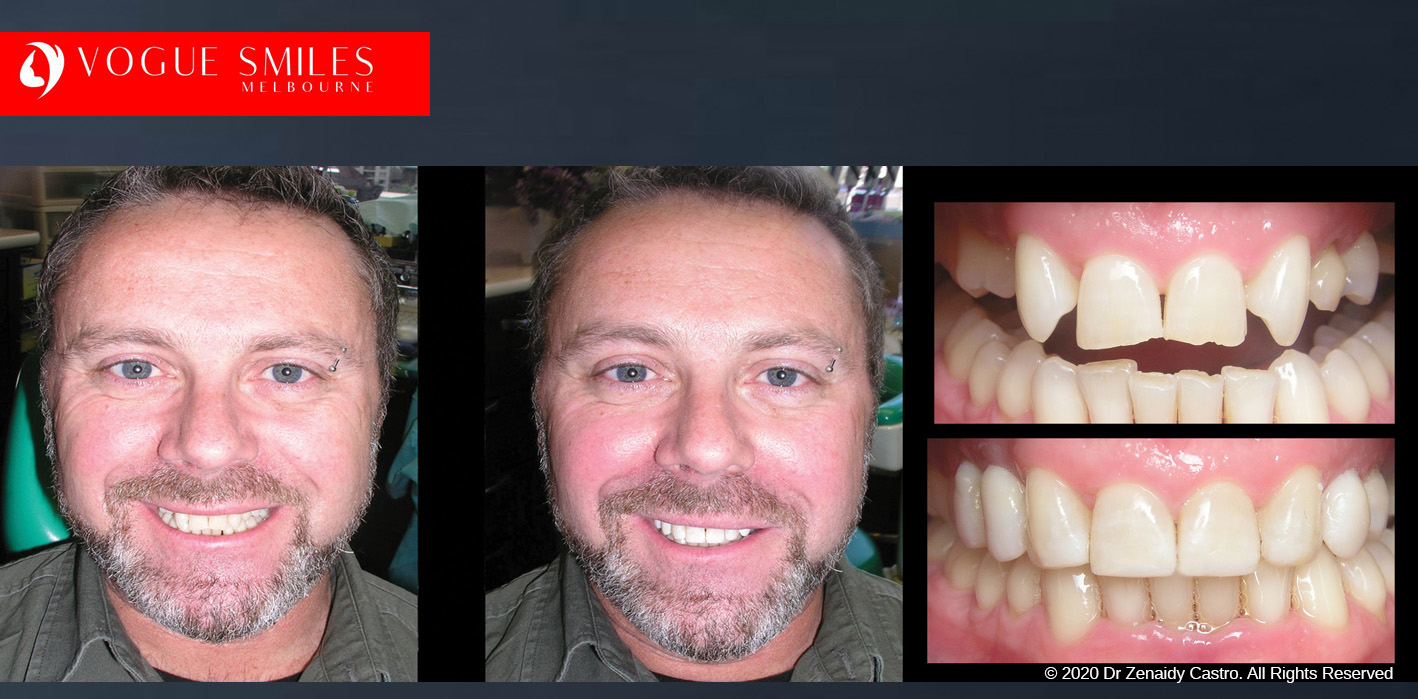
RISK OF BONDING
1. Staining can occur with smoking and excessive amounts of coffee and tea.
2. Durability varies but its approximately 3 to 5 years before replacement is required
3. Chipping or fracturing may necessitate repair or replacement and extra further dental cost
4. Requires more patient care to prevent staining or future chipping.
5. Breakage of the bonding materials occurs more readily with bonding than with Porcelain restorations
6. In short term, it is less costly, but the potential of frequent repairing, replacement or maintenance may mean more expensive in long term plus the time lost involved on frequent dental visit to do repair or maintenance.
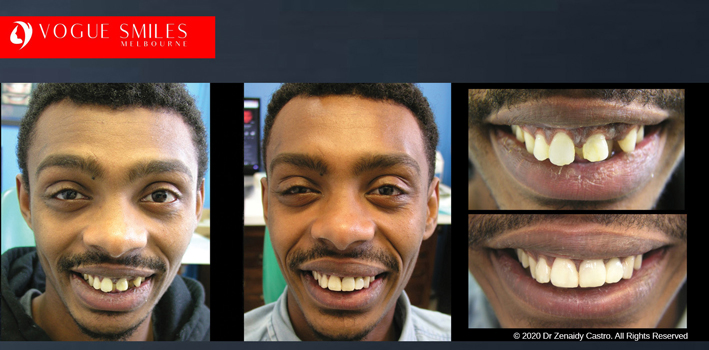
How Long Does Bonding Material Last?
- The lifespan of bonding materials depends on how much bonding was done and your oral habits. Plastic bonding may last for years but it is less strong than the more durable or longer lasting Porcelain restoration. Typically, however, bonding material lasts from 3 -5 years up to about 10 years before needing to be touched up or replaced, depending on tooth location and patient’s bite and eating and chewing habits.
- They have a useful life of 3 to 8 years.
- Part of the success of dental bonding is determined, in part, on the location of the restoration on the tooth. If the bonding is on the very edge of your tooth, it most likely won’t not last as long because of biting forces and what types of food you are biting into. Chewy, hard or crunchy foods will weaken the bonding quickly compared to soft foods. Many patients with bonding on their front teeth avoid directly biting into food that can compromise the structural soundness of dental bonding.
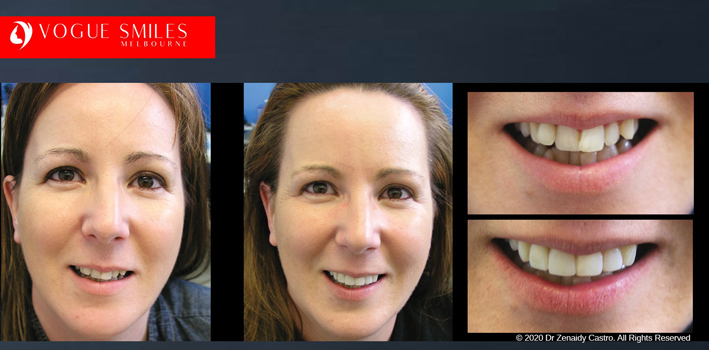
How much does Dental Bonding & Composite Veneers Cost in Melbourne?
-
- Cost of Dental Bonding
- The Cost of Dental Bonding depends on what it is used for? Is it to repair a small imperfections like chipped, or fill a small area cavities of the tooth, or is it something to be used as a whole facing of the entire front surface of your front teeth which are called Composite Resin Veneers
- The cost of dental bonding is also determined by many factors. Some of these factors include your particular dental conditions, the complexity of cosmetic case, the number of teeth that requires treatment, your location, extra procedures that may be involved, the experience of the dentist that will carry out the bonding and your expectations.
Elements to Consider When It Comes to Cost
While the cost of bonding varies from patient to patient, there are several factors that will largely influence the total cost of your treatment. These include:
- Complexity of the Treatment Plan: The overall complexity of your treatment will also factor into your total Dental Bonding costs. Patients needing a complex treatments, will have higher treatment costs
- Number of teeth being treated: Treatment for several teeth will cost more than a single tooth.
- Size of treatment area: Filling in a small section of a tooth will cost less than resurfacing an entire tooth.
- Additional treatments: Complementary treatments can increase your expenses. If bonding is being incorporated into a smile makeover, talk to your dentist about potential discounts for bundled treatments.
- Location of the office:
- Experience of the dentist: Though a highly reputable dentist may charge more for their services, they can help ensure you achieve your desired results without complications.
Bonding associated with composite direct veneers averages between $350 to $700 per tooth, whereas bonding associated with indirect porcelain veneers averages between $700 and $2,500 per tooth.
Am I suited to Composite Bonding?
Your suitability for composite bonding will depend on many factors, such as the position and colour of your teeth, but also what you would like your final smile to look like. Generally, your teeth will need to be in good condition with enough tooth enamel to bond the composite onto.
Composite bonding is primarily for patients who wish to improve the appearance of their smile, but don’t want to go through substantial restorative procedures such as placing veneers or crowns. Your dentist will assess your gums, teeth and bite to ensure composite bonding is suitable for you. This is why the initial consultation is so important in making a proper assessment and treatment plan.
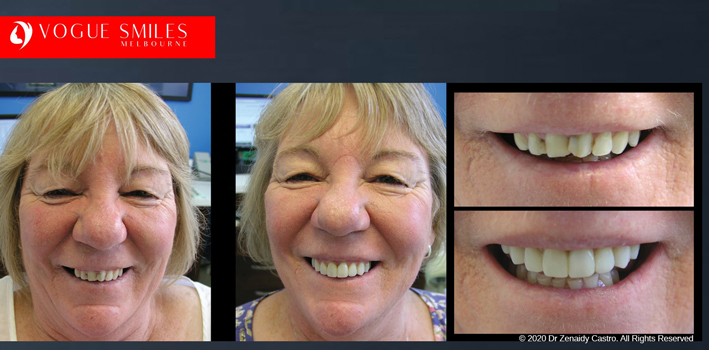
Composite bonding versus Composite veneers
Composite bonding is usually reserved for situations where small chips or repairs are required. Subtle changes to the tooth shape and length can also be made. Composite veneers on the other hand, work by covering the complete front surface of the tooth structure enabling larger changes in tooth shape and form to take place. Usually 4-6 composite veneers are done to the front teeth to give the same day smile makeover.
Either of the two are great options if you are looking for fast, minimally invasive way to get the perfect smile
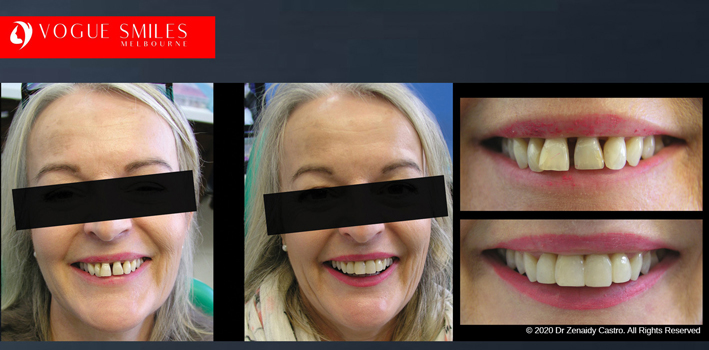
What are Composite Veneers?
Composite veneers are custom made from a composite resin that is applied to the surface of the tooth and moulded to the desired shape and finish. They can be used to improve the appearance of natural teeth that have damage, discolouration, are irregularly shaped, improperly aligned and can also fix minor chips or cracks in the teeth.
What’s involved?
The composite is applied directly to the front surface of the teeth and moulded to the required shape and size before being set and bonded to the teeth. The veneers are then finely shaped and polished to achieve the desired appearance. It is relatively straightforward to reshape composite veneers either by adding or removing composite, either at the initial appointment or any follow-up appointments if desired.
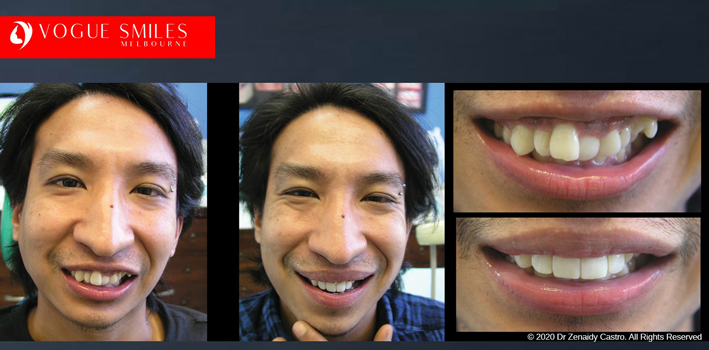
Composite Bonding, Composite Veneers & Porcelain Veneers – What’s the difference!
Between instagram transformations and celebrity before and after’s, it’s easy to see why certain treatments are at the top of everybody’s wish lists nowadays. But, do you really know what the difference is between composite bonding, composite veneers and porcelain veneers? Because in terms of cost, treatment time and materials used – they’re actually quite different!
Let’s start with Composite Bonding
What is composite bonding?
A popular one on Instagram nowadays, Composite Bonding (also known as cosmetic or dental bonding) can be used for a whole range of dental problems, including chips, cracks, discolouration, fixing small gaps and minor fractures.
The procedure is carried out by a trained dental practitioner, who uses aesthetic high-end composite materials to correct dental imperfections.
What’s involved?
Before treatment begins the dentist will clean your teeth and then prepare the outer surface of the tooth or teeth with an acidic gel to ensure the composite will properly adhere. The colour of your composite will be decided and matched to that of your natural teeth before treatment begins. The resin will be applied to the tooth and then hardened with a blue light to firmly set it.
Once this is done the composite will be polished and moulded into the shape of your natural tooth.
Pros and Cons:
- It’s able to fill, shape and bond teeth in a single visit and is non-invasive and generally pain free.
- The results produced look very natural and blend in well with tooth colour.
- Unlike other restorative treatments the main structure of your teeth is left untouched, to ensure you retain all of your teeth’s natural strength.
- It also a reversible treatment, so if any problems do occur they can easily be rectified.
- They do require more upkeep than Porcelain Veneers.
What are Composite Veneers?
Composite veneers are custom made from a composite resin that is applied to the surface of the tooth and moulded to the desired shape and finish. They can be used to improve the appearance of natural teeth that have damage, discolouration, are irregularly shaped, improperly aligned and can also fix minor chips or cracks in the teeth.
What’s involved?
The composite is applied directly to the front surface of the teeth and moulded to the required shape and size before being set and bonded to the teeth. The veneers are then finely shaped and polished to achieve the desired appearance. It is relatively straightforward to reshape composite veneers either by adding or removing composite, either at the initial appointment or any follow-up appointments if desired.
Pros and cons:
- Composite veneers are able to fill and shape teeth in a single visit.
- It’s a minimally invasive treatment and requires minimal prep work on your natural teeth, meaning that they are not permanently altered.
- The results produced look very natural and blend in well with tooth colour.
- They do require more upkeep than Porcelain Veneers, they usually need redoing around every 4-6 years but potentially a lot longer if looked after.
What’s the difference between composite veneers and composite bonding?
In terms of the material they are both the same. However, composite veneers cover the entire surface of the tooth, whilst composite bonding normally covers part of the tooth.
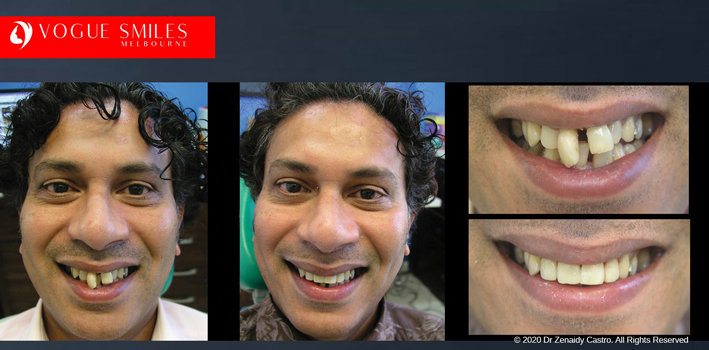
Are Composite Veneers The Same As Bonding?
The material used for composite veneers and bonding is the same which is the composite resin. The only difference about them is how they are applied to your tooth. Bonding normally covers a part of your tooth whilst composite veneer covers the entire surface of your tooth. Both of these are used to improve the aesthetic of your tooth.
There’s another way of improving the aesthetics of your teeth as well and that is porcelain veneers. So to differentiate the composite veneers and porcelain veneers, first we should know what these are.
Porcelain veneer is a procedure where the teeth is roughly shaped and the veneers are glued on top of your original teeth while the composite veneer is a simple procedure where a dentist applies a tooth coloured resin on your damaged tooth. Based on the definition, if you have a minor teeth problem then a bonding is a perfect option for you.
